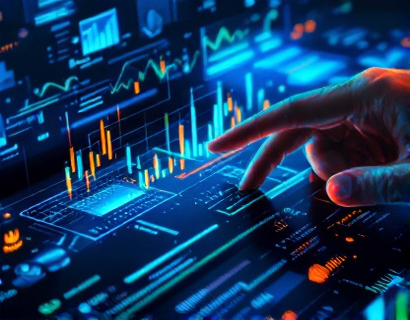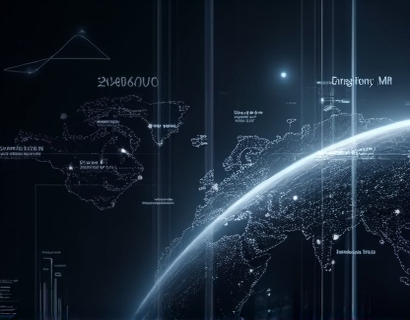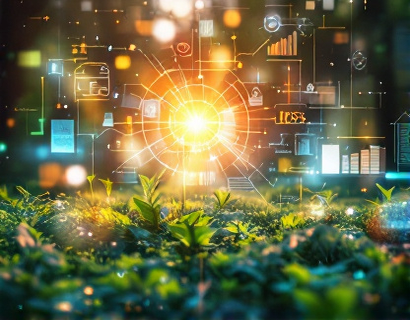Maximizing Aquaponics Business Success with Advanced Management Software
In the rapidly evolving world of sustainable agriculture, aquaponics stands out as a promising method that combines fish farming and hydroponic plant cultivation in a symbiotic environment. For aquaponics businesses, managing the intricate balance between water quality, fish health, and plant nutrition is crucial for success. Advanced management software plays a pivotal role in streamlining operations, boosting productivity, and enhancing sustainability. This article delves into how sophisticated software solutions can transform aquaponics management, providing precise tools for monitoring and controlling systems to ensure optimal conditions for both fish and plants while minimizing environmental impact.
Understanding the Challenges in Aquaponics Management
Aquaponics systems are complex ecosystems where the health of fish and plants is interdependent. Maintaining the right water parameters, such as pH, ammonia, nitrite, and nitrate levels, is essential. Any imbalance can lead to stress or disease in fish, which in turn affects plant growth. Traditional management methods often rely on manual testing and adjustments, which can be time-consuming and prone to human error. Advanced management software addresses these challenges by offering real-time monitoring and automated control, ensuring consistent and optimal conditions.
Key Features of Advanced Management Software
Modern management software for aquaponics is equipped with a suite of features designed to simplify and enhance the farming process. These include:
- Real-time data monitoring: Continuous tracking of water parameters and system performance.
- Automated alerts: Instant notifications for any deviations from set parameters.
- Remote access: Managing the system from anywhere via a smartphone or computer.
- Historical data analysis: Reviewing past data to identify trends and make informed decisions.
- Integration with hardware: Seamless connection with pumps, filters, and other equipment.
These features collectively contribute to a more efficient and reliable operation, allowing aquaponics farmers to focus on growth and expansion rather than daily maintenance tasks.
Enhancing System Optimization
One of the primary benefits of advanced management software is its ability to optimize system performance. By continuously monitoring and adjusting water parameters, the software ensures that both fish and plants thrive. For instance, it can automatically adjust pH levels or oxygen levels based on real-time data, preventing conditions that could harm the organisms. This level of precision not only improves the health and growth rates of fish and plants but also reduces the risk of crop failure and fish mortality.
Moreover, the software can optimize feeding schedules for fish based on their growth stages and environmental conditions. Overfeeding is a common issue in aquaponics that can lead to water quality problems. Advanced software can calculate the exact amount of feed required, reducing waste and maintaining water clarity.
Boosting Productivity
Productivity is a key factor in the success of any aquaponics business. Advanced management software enhances productivity in several ways:
First, by automating routine tasks such as data logging and system adjustments, farmers can save a significant amount of time. This allows them to allocate more time to other critical aspects of the business, such as marketing and expansion. Second, the software's ability to provide detailed insights and analytics helps farmers make data-driven decisions, leading to better crop yields and higher quality produce. Third, the system's reliability and consistency reduce downtime and operational errors, ensuring a steady flow of high-quality products to the market.
Additionally, the software can integrate with other business management tools, such as inventory management and sales tracking, providing a holistic view of the business operations. This integration helps in identifying bottlenecks and areas for improvement, further boosting overall productivity.
Promoting Sustainability
Sustainability is at the core of aquaponics, and advanced management software plays a crucial role in enhancing environmental stewardship. By optimizing resource use and minimizing waste, the software contributes to a more sustainable farming practice. Here are some ways in which advanced software promotes sustainability:
First, precise control over water parameters reduces the need for chemical treatments and frequent water changes, conserving water and reducing chemical usage. Second, the software's ability to monitor and adjust feeding schedules minimizes feed waste, which is a significant source of pollution in traditional aquaculture. Third, by extending the lifespan of the system through optimal maintenance, the software helps reduce the environmental impact associated with building and disposing of equipment.
Furthermore, the data collected by the software can be used to conduct environmental impact assessments and demonstrate the sustainability credentials of the business to consumers and regulatory bodies. This not only enhances the business's reputation but also aligns with the growing consumer demand for eco-friendly products.
Case Studies and Success Stories
Several aquaponics businesses have already seen significant improvements by implementing advanced management software. For example, a medium-sized aquaponics farm in the United States reported a 30% increase in fish growth rates and a 25% reduction in water usage after integrating a comprehensive management system. The farm's owner attributed these improvements to the software's ability to maintain optimal conditions and reduce manual errors.
Another case involves a small-scale urban aquaponics operation in a densely populated city. By using advanced software, the business was able to automate most of its operations, allowing the owner to manage the farm remotely while working from home. This not only reduced operational costs but also expanded the business's reach by selling to local restaurants and grocery stores.
Challenges and Considerations
While the benefits of advanced management software are clear, there are some challenges and considerations that aquaponics businesses should be aware of. First, the initial investment in software and hardware can be significant. However, the long-term savings in operational costs and increased productivity often justify the expense. Second, training staff to use the software effectively is essential. Providing comprehensive training and support can help overcome this challenge.
Compatibility with existing systems is another consideration. Ensuring that the new software integrates seamlessly with current hardware and other management tools is crucial for a smooth transition. It's also important to choose a software provider with a strong support system, offering regular updates and technical assistance to address any issues that may arise.
Future Trends in Aquaponics Software
The field of aquaponics software is rapidly evolving, with new technologies and innovations on the horizon. One emerging trend is the integration of artificial intelligence (AI) and machine learning (ML) to further optimize system performance. AI can analyze vast amounts of data to predict and prevent issues before they occur, while ML algorithms can continuously improve the accuracy of system adjustments based on historical data.
Another trend is the development of user-friendly interfaces that make advanced features accessible to farmers with varying levels of technical expertise. This democratization of technology ensures that smaller and new entrants in the aquaponics industry can also benefit from sophisticated management tools.
Additionally, the increasing focus on IoT (Internet of Things) devices is leading to more interconnected and intelligent aquaponics systems. IoT-enabled sensors and devices can provide even more granular data, enabling finer control and monitoring.
Conclusion
Advanced management software is a game-changer for aquaponics businesses, offering a range of benefits that enhance operations, boost productivity, and promote sustainability. By leveraging these tools, aquaponics farmers can create more efficient, reliable, and environmentally friendly systems. As the industry continues to grow, the role of technology will become even more critical in addressing the complex challenges of aquaponics and ensuring its success in the future.










































